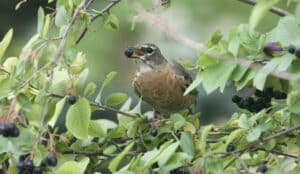
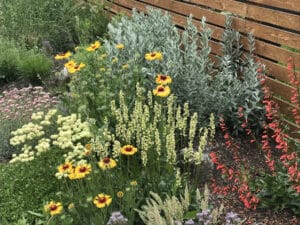
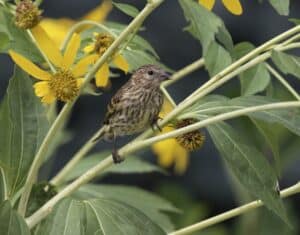
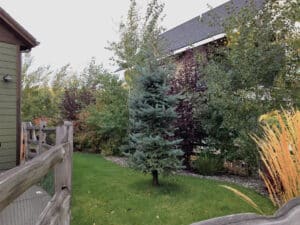

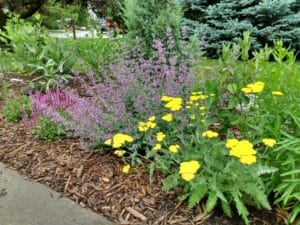
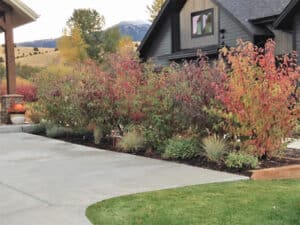
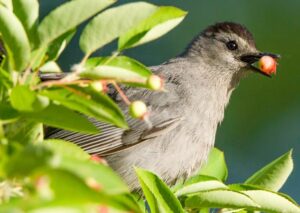
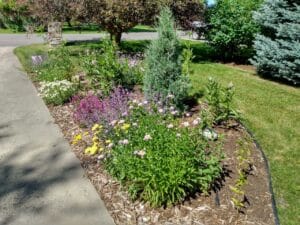
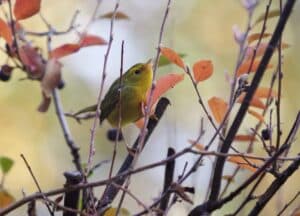
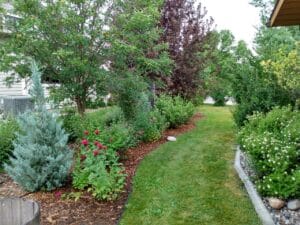
One of the biggest threats birds face is habitat loss. Urban growth and new subdivisions are altering and destroying natural habitats, often resulting in sterile acres of mowed lawns and ornamental landscapes bereft of wildlife. You can help reverse that trend by planting a bird friendly landscape, especially one focused on native plants that provide food and shelter for a variety of birds. By doing so you will also help conserve water, eliminate chemical fertilizers and pesticides, and beautify your garden all while creating habitat that birds need. If we each do our part to add plants for birds we will create wildlife havens throughout our communities.
Sacajawea Audubon has developed a brochure highlighting a selection of plants for birds that are specific and hardy to our area: “Landscaping for Birds”. These brochures are available at our monthly programs, at Cashman Nursery and Lawson Greenhouse, and are in the hands of several landscape firms in Bozeman. Ask for them or download the online version here: “Landscaping for Birds”
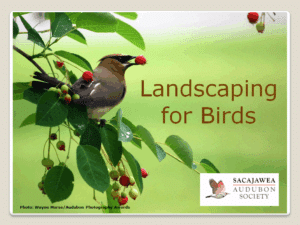
Plants for Birds
Check out our new Plants for Birds Demo Garden at Story Mill Community Park!
View a one-minute video about Plants for Birds created by National Audubon.
For more detailed information about specific recommended plants check out our collection of “Plants for Birds” articles from past newsletters. These plant profiles of recommended bird-friendly plants can be accessed here:
Landscaping Tips
No matter what the size of your yard, you can make a difference in the lives of birds. Follow these principles for success with your own bird friendly landscaping:
- Native plants are best: Birds are most naturally attracted to native plants that they are familiar with and they recognize as food sources and shelter. These plants are also best adapted to the area, requiring less water and maintenance. Many birds feed on the native insects that have co-evolved with locally native plants. Look for the plants marked with ‘N’ to indicate ‘Native Species’ in our brochure. You can also enter your zip code to access a list of appropriate native plants on the National Audubon Native Plant Database here: audubon.org/native-plants
- Create habitat layers: If you have room, try to provide the plant layers you might find in a natural habitat:
- Plant tall canopy trees for nesting and roosting sites and to attract cavity nesters
- Shrubs and small trees provide fruit, berries, seeds, nesting sites, and cover for security
- Herbacious plants, including perennials, annuals, grasses, and groundcovers, provide seeds for birds, nectar for hummingbirds, and a rich habitat for pollinators.
- Decaying leaves, wood, detritus, and soil provide an environment for the worms, insects, larvae and pupae that birds need for food.
- Plant for density: Create dense plantings of trees and shrubs and corridors of security for birds to move through. Large densely planted beds or groupings on the edges of your property are more desirable than scattered individual plants.
- Provide variety: It’s very important to have a diversity of plants with flowers, fruits, and seeds maturing at different times throughout the seasons. A variety of plants attracts a variety of birds.
- Cluster plants in masses: Group 3, 5, or more of the same plant species together. This creates an attractive look, provides density and attracts more pollinators and birds.
- Lose some lawn: Mowed grass has the least food and virtually no shelter for birds. Make wide planting beds filled with trees, shrubs, and flowers. Plant large patches of habitat with paths of mowed lawn between them to create a truly lovely and wildlife friendly yard.
- Provide water: Treat your birds to a bird bath unless you are lucky enough to live by a stream or pond.
